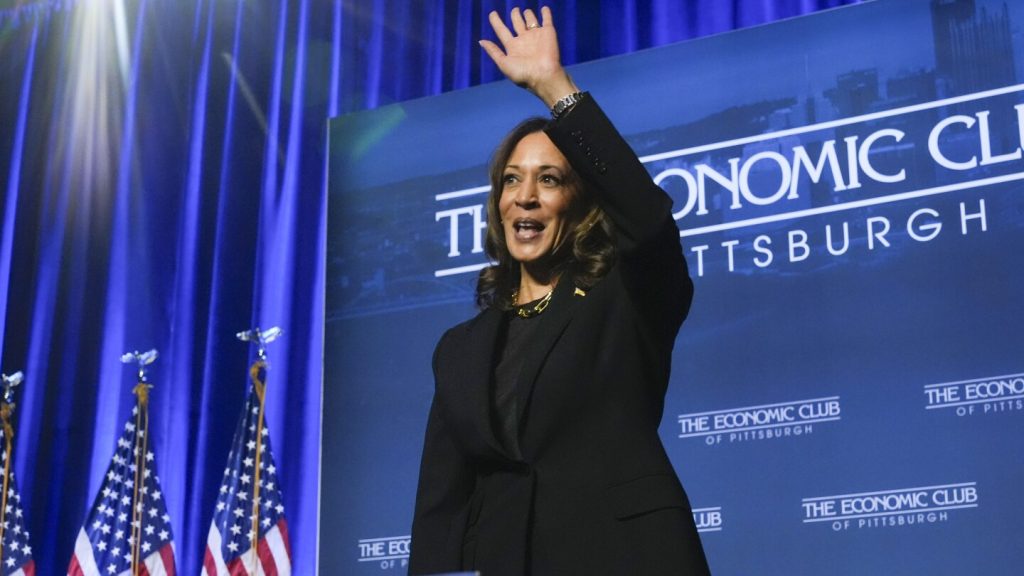In a recent event at the Economic Club of Pittsburgh, Vice President Kamala Harris emphasized her commitment to building an economy that supports both businesses and the middle class. Pushing back against Republican nominee Donald Trump’s accusations of promoting “communist” ideas, Harris stated that she is open to good ideas from any source and outlined her plans to double the number of people trained in registered apprenticeships and increase home ownership. Harris assured the audience that her approach as president would be grounded in values of fairness, dignity, and opportunity, with a pragmatic outlook.
Trump, on the other hand, presented his economic vision during a visit to a furnituremaker in North Carolina, discussing measures like imposing tariffs on foreign competitors and advocating for lower tax rates for U.S. manufacturers. The contrasting messages from both candidates reflect their efforts to appeal to voters in battleground states and address concerns about the economy. While Trump focused on U.S. dominance over foreign competitors, Harris emphasized supporting the middle class and entrepreneurs. The candidates are striving to make their cases on the economy, which remains a top issue for voters according to recent polls.
Following her speech, Harris criticized Trump’s tariff proposals in an interview with MSNBC, stating that implementing tariffs across the board is not a practical solution. She also reiterated her support for raising corporate tax rates, emphasizing the importance of everyone paying their fair share. Harris’ economic philosophy revolves around fostering collaboration between the government and the private sector, in contrast to Trump’s focus on tax cuts and tariffs as a means to boost the economy. Both candidates are intensifying their messaging on economic issues, seeking to gain an advantage with voters.
Harris plans to provide tax breaks and incentives worth $100 billion to enhance U.S. manufacturing and emerging technologies, aiming to strengthen the economy through partnerships with businesses. The campaign’s efforts to garner support from business leaders align with Harris’ detailed policy proposals and collaborative approach. Meanwhile, Trump has proposed populist measures such as eliminating taxes on tips and Social Security, limiting credit card interest rates, and creating low-tax zones on federal lands to attract employers. The candidates are engaging in a battle over tax policies, with Harris aiming to sustain tax cuts for the middle class and provide new breaks for parents and entrepreneurs.
Trump has criticized Harris for proposing tax hikes, labeling her the “tax queen” and warning of potential repercussions on the middle class. Harris has also scrutinized Trump’s tariff plans, referring to them as a “national sales tax” that could raise costs for imported goods and potentially burden taxpayers. As both candidates present their economic plans to voters, they are highlighting their differences on taxation and regulatory policies. Harris has pledged to streamline permitting processes and cut red tape to speed up job creation and enhance America’s competitiveness, contrasting with Trump’s emphasis on slashing regulations to stimulate economic growth.


